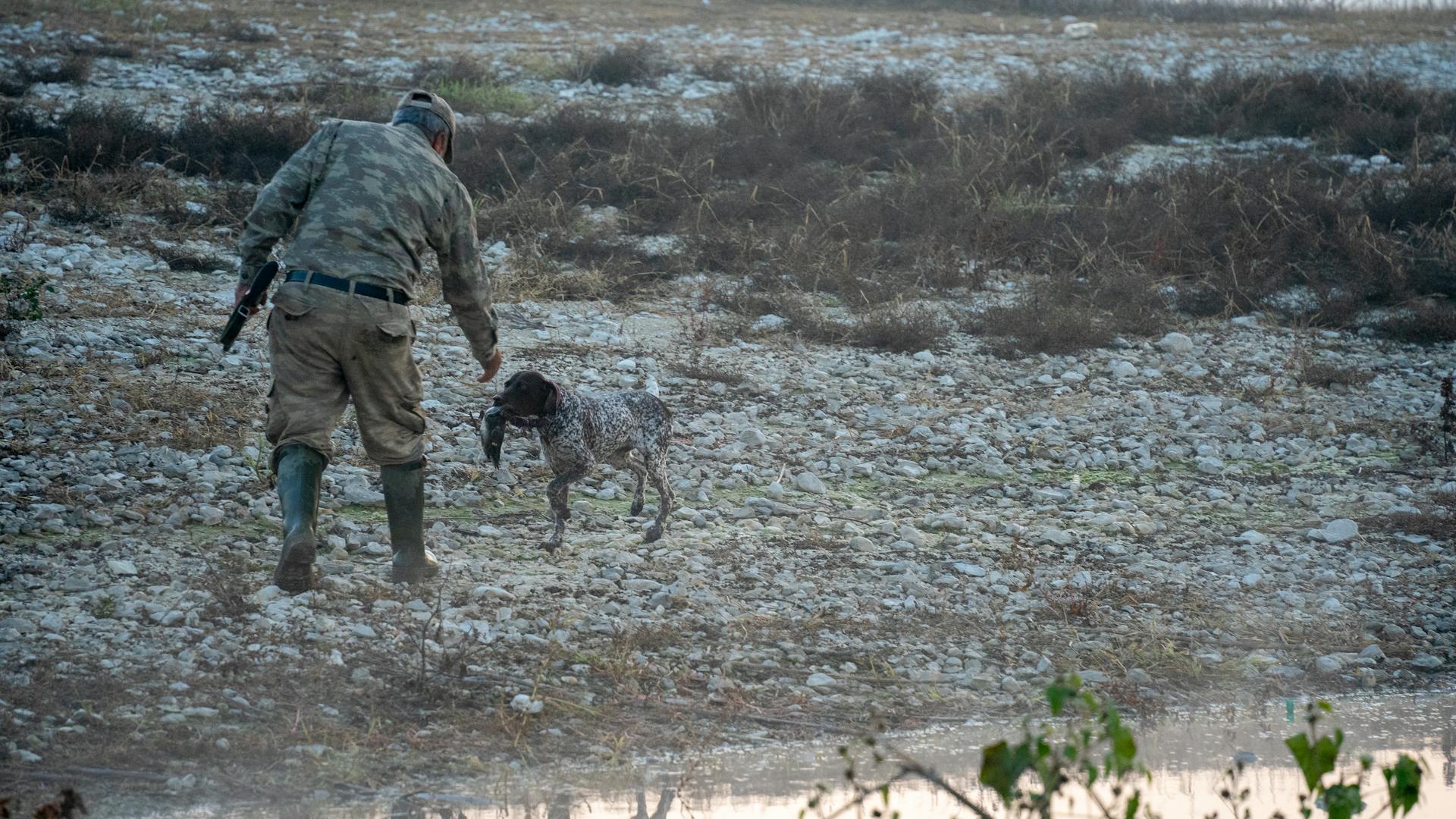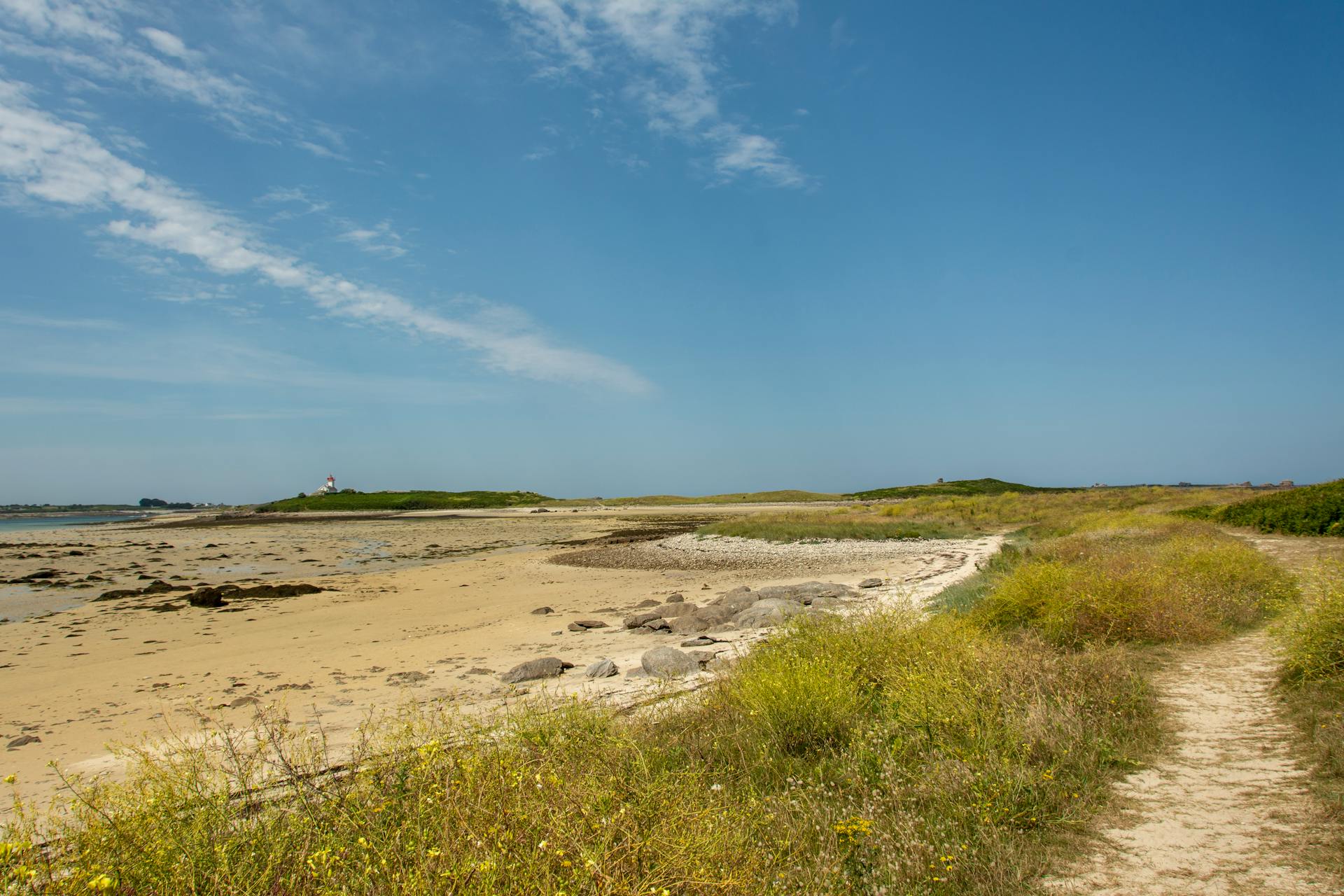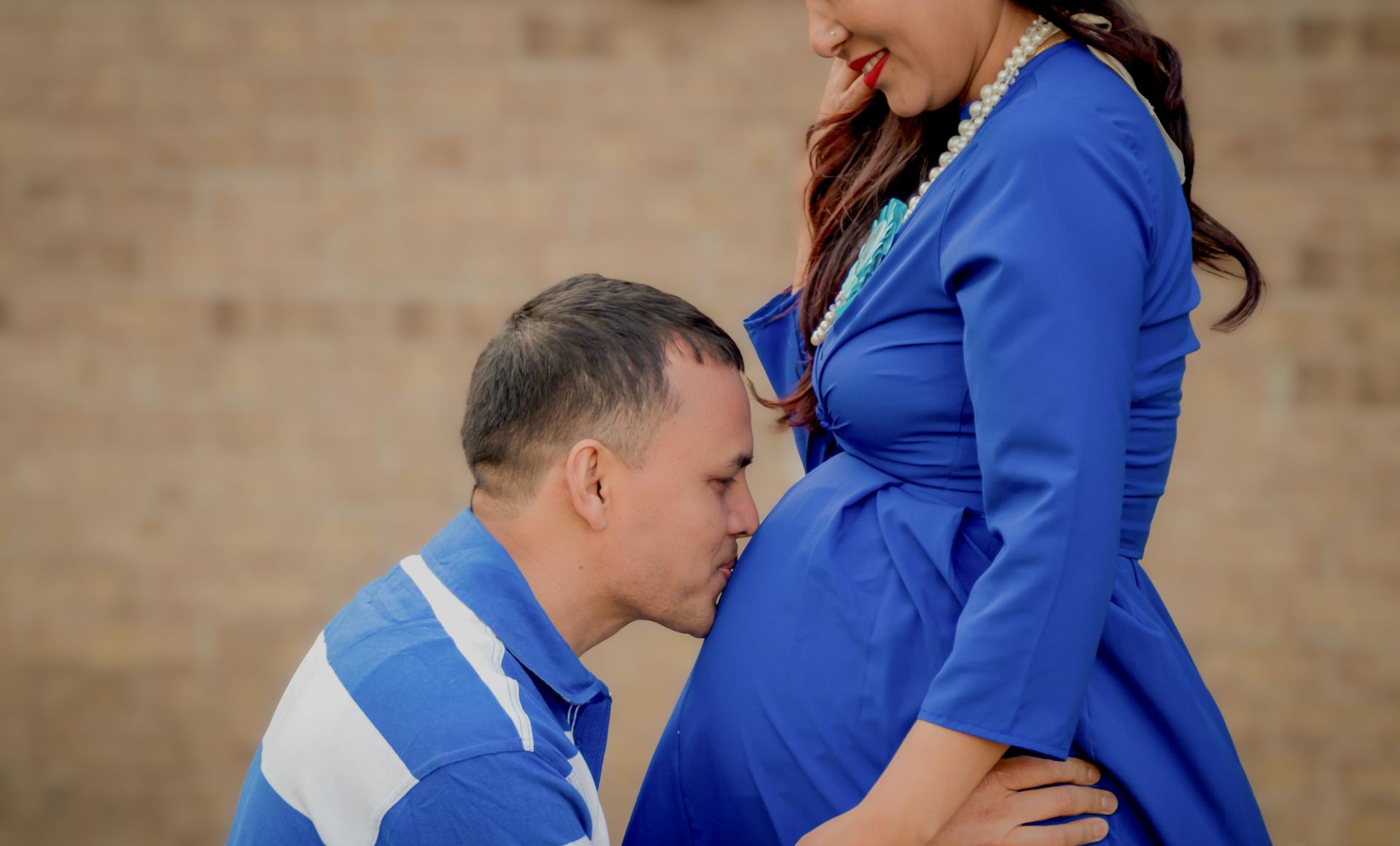
The Grand Fauve de Bretagne is a rare and ancient dog breed that originated in Brittany, France. This breed is known for its distinctive reddish-brown coat.
Their breeding is carefully managed to ensure the health and well-being of the dogs. This includes testing for inherited conditions such as hip dysplasia and eye problems.
Responsible breeding practices are crucial to prevent the spread of these conditions. This is especially important for a rare breed like the Grand Fauve de Bretagne.
The breeders prioritize the health of their dogs, often working with veterinarians and genetic experts to ensure the best possible outcomes.
Additional reading: Coton De Tulear Health Problems
Basset Fauve de Bretagne
The Basset Fauve de Bretagne is a healthy breed, but like all breeds, it's not immune to certain health issues. Regular veterinary checkups are essential to catch any potential problems early on.
Progressive Retinal Atrophy (PRA) is a genetic condition that can cause progressive vision loss and eventual blindness in Basset Fauve de Bretagnes. This is why regular veterinary eye exams and genetic testing are crucial for early detection and responsible breeding practices.
For your interest: Basset Fauve De Bretagne
Epilepsy is another potential issue that can cause recurrent seizures in Basset Fauve de Bretagnes. While it can't be cured, epilepsy is often managed with antiepileptic medications under veterinary supervision.
Cardiomyopathy, a disease affecting the heart muscles, can lead to heart failure in Basset Fauve de Bretagnes. Early diagnosis through veterinary examinations, including echocardiograms, is vital for managing the condition and improving the dog's prognosis.
Skin allergies can be triggered by various factors, including food, environmental allergens, or parasites, and can cause itching, redness, and skin infections in Basset Fauve de Bretagnes. Identifying and addressing the specific allergen is key to providing relief and preventing recurring skin issues.
Thyroid issues, such as hypothyroidism, can result from the underproduction of thyroid hormones and can lead to weight gain, lethargy, and skin problems in Basset Fauve de Bretagnes. Regular veterinary check-ups and blood tests are necessary for early detection and effective treatment.
Here are some common health issues that can affect Basset Fauve de Bretagnes:
- Progressive Retinal Atrophy (PRA)
- Epilepsy
- Cardiomyopathy
- Skin Allergies
- Thyroid Issues
Physical Characteristics
The Grand Fauve de Bretagne's forequarters are a key part of its overall appearance.
Its coat is a crucial aspect, and it should be dense and harsh, not woolly or curly.
The body of the Grand Fauve de Bretagne is strong and muscular, with a deep and broad chest.
The ribs are rounded, and the back is short, broad, and firm.
The loin is also broad and muscular, with only a slight tuck up.
Forequarters
The forequarters of this breed are an important aspect of their physical characteristics. Serious faults include a woolly or curly coat.
A sparse, smooth, fine coat is actually considered a fault. This is a key thing to keep in mind when assessing the breed's overall appearance.
Body
The body of this subject is quite impressive. The chest is deep and broad, and the ribs are rather rounded.
The back is surprisingly short, broad, and firm, which is a notable feature. I've seen similar builds in some of the more athletic individuals I've encountered.
The loin is broad and muscular, making it a strong and capable area. This muscular build is likely a result of the subject's overall physical health and fitness.
Tail
The tail is a distinctive feature of this dog breed, and it's quite impressive. Medium length and thick at the base, the tail is carried slightly sickle fashioned.
It has bristly hair, which is a notable characteristic. This type of hair can be a bit prickly, but it's a natural part of the dog's coat.
The tail is also quite expressive, swinging from side to side when the dog is in action. This movement is a great way to gauge the dog's mood and energy level.
Breeding and Health
When breeding a Grand Fauve de Bretagne, it's essential to consider the potential health issues that can arise. Regular veterinary check-ups and genetic testing can help identify potential problems early on.
Progressive Retinal Atrophy (PRA), a genetic condition, can lead to progressive vision loss and eventual blindness. Early detection through regular veterinary eye examinations is crucial.
Epilepsy in Grand Fauve de Bretagnes can manifest as recurrent seizures and is often managed with antiepileptic medications under veterinary supervision. This can significantly improve the affected dog's quality of life.
Some breeds, including Doberman Pinschers and Boxers, are more predisposed to cardiomyopathy, a heart condition that can lead to heart failure. Early diagnosis through veterinary examinations, including echocardiograms, is vital for managing the condition.
Here are some common health issues that can affect Grand Fauve de Bretagnes:
- Progressive Retinal Atrophy (PRA)
- Epilepsy
- Cardiomyopathy
- Skin Allergies
- Thyroid Issues
Basset Health
Basset Fauve de Bretagnes are generally healthy dogs, but like all breeds, they can be prone to certain health issues.
Regular veterinary check-ups are essential for early detection and prevention of these issues.
Progressive Retinal Atrophy (PRA) is a genetic condition that can lead to vision loss and blindness, so genetic testing is crucial for breeding practices.
Epilepsy in dogs can be managed with antiepileptic medications under veterinary supervision.
Cardiomyopathy can lead to heart failure, so early diagnosis through veterinary examinations is vital.
Skin allergies can be triggered by various factors, such as food, environmental allergens, or parasites, and identifying and addressing the specific allergen is key to providing relief.
Thyroid issues, such as hypothyroidism, can be managed with lifelong hormone supplementation.
Here are some common health issues that Basset Fauve de Bretagnes may face:
- Progressive Retinal Atrophy (PRA)
- Epilepsy
- Cardiomyopathy
- Skin Allergies
- Thyroid Issues
Breeding Restrictions
The Kennel Club has rules and regulations that may prevent a litter from being registered. These restrictions are in place to ensure the health and well-being of the dogs.
There are not currently any additional breed specific restrictions in place for the Basset Fauve de Bretagne.
Color
The Grand Fauve de Bretagne is a stunning breed, and one of its most distinctive features is its color. Breed standard colors in this breed include Fawn, Golden Fawn, Red, and Red Fawn.
These colors are traditional and well-known within the breed, and it's interesting to note that the breed standard colors are a key part of what makes this breed so unique.
In terms of specific shades, the breed can range from golden to red, with a few black hairs and a white star on the chest being tolerated.
Here are the breed standard colors in the Grand Fauve de Bretagne breed, summarized in a list:
- Fawn
- Golden Fawn
- Red
- Red Fawn
Frequently Asked Questions
What are the characteristics of the Griffon Fauve de Bretagne?
The Griffon Fauve de Bretagne is a friendly and social breed known for its lively, intelligent, and affectionate nature. It makes a great family companion due to its gentle and adaptable personality.
What is a standard Griffon Fauve de Bretagne?
The Griffon Fauve de Bretagne is a medium-sized dog with a distinctive rough coat, long ears, and a long tail. It has a muscular build and a short, bony body.
Sources
- https://www.bassetfauvedebretagneclub.com/breed-information/
- https://www.thekennelclub.org.uk/search/breeds-a-to-z/breeds/hound/griffon-fauve-de-bretagne-imp/
- https://dogtime.com/dog-breeds/basset-fauve-de-bretagne
- https://www.ukcdogs.com/griffon-fauve-de-bretagne
- https://www.wisdompanel.com/en-us/dog-breeds/basset-fauve-de-bretagne
Featured Images: pexels.com

